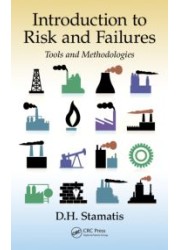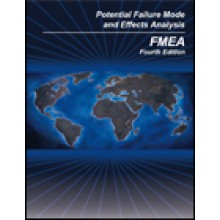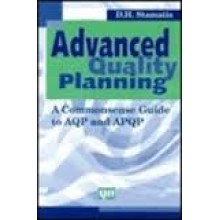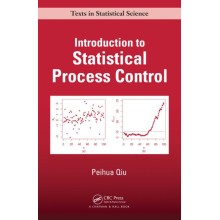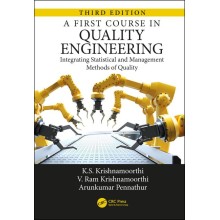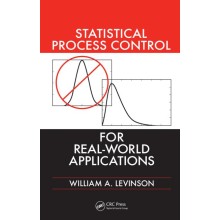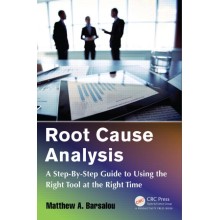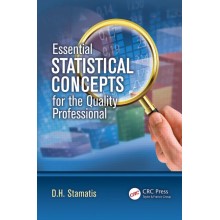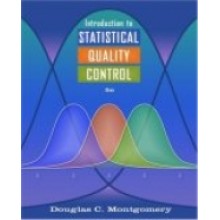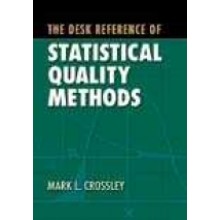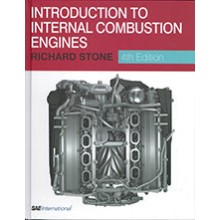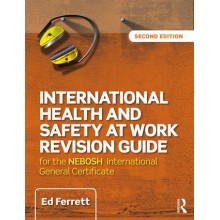Introduction to Risk and Failures: Tools and Methodologies
Quantity:
-
Add to Compare
Risk is everywhere, in everything we do. Realizing this fact, we all must try to understand this "risk" and if possible to minimize it. This book expands the conversation beyond failure mode and effects analysis (FMEA) techniques. While FMEA is indeed a powerful tool to forecast failures for both design and processes, it is missing methods for considering safety issues, catastrophic events, and their consequences. Focusing on risk, safety, and HAZOP as they relate to major catastrophic events, Introduction to Risk and Failures: Tools and Methodologiesaddresses the process and implementation as well as understanding the fundamentals of using a risk methodology in a given organization for evaluating major safety and/or catastrophic problems.
The book identifies and evaluates five perspectives through which risk and uncertainty can be viewed and analyzed: individual and societal concerns, complexity in government regulations, patterns of employment, and polarization of approaches between large and small organizations. In addition to explaining what risk is and exploring how it should be understood, the author makes a distinction between risk and uncertainty. He elucidates more than 20 specific methodologies and/or tools to evaluate risk in a manner that is practical and proactive but not heavy on theory. He also includes samples of checklists and demonstrates the flow of analysis for any type of hazard.
Written by an expert with more than 30 years of experience, the book provides from-the-trenches examples that demonstrate the theory in action. It introduces methodologies such as ETA, FTA, and others which traditionally have been used specifically in reliability endeavors and details how they can be used in risk assessment. Highly practical, it shows you how to minimize or eliminate risks and failures for any given project or in any given work environment.
Table of Contents
Risk
Risk Assessment and Analysis
Quantitative Analysis
Fear as Intuitive Risk Assessment
Audit Risk
Other Considerations
Risk versus Uncertainty
Risk Attitude, Appetite, and Tolerance
Risk as Vector Quantity
Disaster Prevention and Mitigation
Scenario Analysis
Notes
References
Selected Bibliography
Approaches to Risk
Zero Mind-Set
ALARP
Example
Reference
Selected Bibliography
Types of Risk Methodologies
Qualitative Methodologies
Tree-Based Techniques
Methodologies for Analysis of Dynamic Systems
Traditional Methodologies
References
Preliminary Hazard Analysis (PHA)
Example PHA: Home Electric Pressure Cooker
References
Selected Bibliography
HAZOP Analysis
Overview
Definitions
HAZOP Process
Detailed Analysis
Effectiveness Factors
Team
Description of Process
Report
Review
Success Factors
References
Selected Bibliography
Fault Tree Analysis (FTA)
Overview
General Construction Rules
References
Selected Bibliography
Other Risk and HAZOP Analysis Methodologies
Process Flowchart
Functional Flow or Block Diagram
Sketches, Layouts, and Schematics
Failure Mode Analysis (FMA)
Control Plan
Process Potential Study (PPS)
Need and Feasibility Analysis
Task Analysis
Human Reliability Analysis
Failure Mode and Critical Analysis
Hazard Identification (HAZID)
Crisis Intervention in Offshore Production (CRIOP)
Hazard Analysis and Critical Control Points (HACCP)
Near-Miss
Reporting
Incident and Accident Investigation and Reporting
Semi-Quantitative
Risk Assessment (SQRA)
Audits
Event Tree Analysis (ETA)
References
Selected Bibliography
Teams and Team Mechanics
Team Members, Qualifications, and Activities
Benefits of Using Teams
HAZOP Team
Consensus
Team Process Check
Problem Solving
Meeting Planning
In‑Process Meeting Management
Common Meeting Pitfalls
Utilizing Meeting Management Guidelines
References
OSHA Job Hazard Analysis
Reference
Selected Bibliography
Hazard Communication Based on Standard CFR 910.1200
Hazard Communication Program and Hazardous Materials Control Committee
References
Appendix A: Checklists
Safety Plan Checklist
Facility Location Checklist
Australian Health Administration (AHA) Guidelines and Checklist
References
Appendix B: HAZOP Analysis Example
Title Page
Contents
Glossary and Abbreviations
Summary
HAZOP Study
Facility Description
Core HAZOP Team
HAZOP Methodology
Guidewords Used in Example
Plant Overview
Analysis of Main Findings
Actions Arising from HAZOP
Selected Bibliography
Index
Write a review
Your Name:Your Review: Note: HTML is not translated!
Rating: Bad Good
Enter the code in the box below:
Copyright © 2014 Engineering Standards Bureau. All Rights Reserved.
Developed By Zoom Into Web


